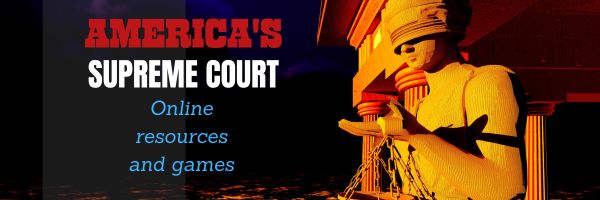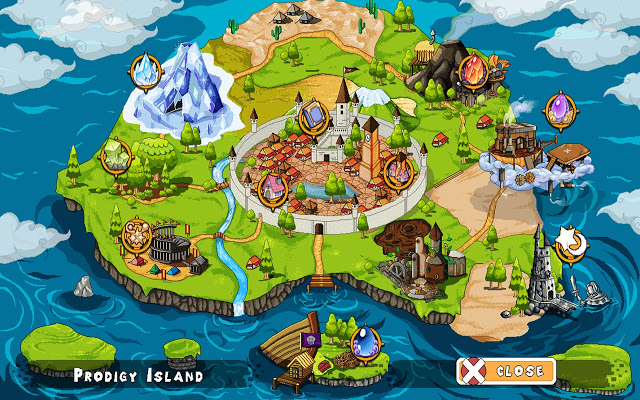When you think of the Supreme Court, you think of old people in black robes that dispassionately determine the fate of the country’s laws. That’s all true, but there’s more to maintaining law and order than a podium and a gavel. The Supreme Court is the apex of one of three branches in the American government:
- The Legislative (the House and the Senate) passes laws
- The Executive (the President) executes the laws
- The Judicial (all courts in the United States) judges whether laws abide by the Constitution
The Supreme Court consists of nine individuals who are nominated by the President and voted in by the Senate. Once approved, they serve for life, the hope being that this allows them to judge apolitically, based on the merits of the case rather than political leaning. These guidelines are not without controversy but are critical to a healthy, democratic environment.
Here are three websites that teach about the Supreme Court. The first two provide an overview and the last simplifies the concepts with five games.
Overview of the Supreme Court
This video summarizes the Supreme Court’s history, purpose, and operations. It is well-designed, full of facts, with excellent graphics that convey visually the lecture-type presentation. It is published by Study.com and is part of a larger fee-based course. It is well-suited to Middle School civics classes.
Besides the video, the webpage includes:
- a transcript of the video
- a quiz
- additional videos that dig deeper into the topics
While the information is excellent and well-presented, the free material is limited. You only get about half of each video before they require a freemium registration.
Important Supreme Court cases for teens
This site includes ten Supreme Court decisions that have directly and substantively impacted the lives of students — as judged by the New York Times. This includes a 1967 decision that determined teenagers have specific rights, contrary to the then-popular opinion that they were basically the ‘property’ of their parents. Another is a 1987 decision that a student’s legitimate expectation of privacy is mitigated by the school’s responsibility to provide a safe environment for all students.
Each case includes:
- a summary
- the background
- the ruling
- the impact
This site is best-suited for teens based on the vocabulary used and the concepts included. It is web-based so plays well on most computers and Chromebooks. Because it is essentially text-based it would display fine on iPads also.
Court Quest
In Court Quest, students adopt the role of an expert on the judicial system. To fulfill requests for help, students must listen carefully to each case and then guide individuals to the right solution. It is created by iCivics and shared free via BrainPop. It is one of a series of civics games created to gamify what is traditionally fairly dry, even boring material. Other court system iCivics games include:
- In the Courts
- Court System
- Let’s Take It Up
- States Rule!
- James Bond in a Honda: Trial Simulation Lesson
These are web-based and can be accessed either through iCivics or a school BrainPop account, with or without registration. The game includes robust teacher resources including a PowerPoint presentation, student expectations, and a game guide. The game is well-done, authentic (the site was started by former Supreme Court Justice Sandra Day O’Connor), and engaging.
***
Use all of these in your curriculum. Start with the first four as background sites. Once students are familiar with the Supreme Court, test their new knowledge with the games. This is a great way to infuse authenticity into a current events topic that likely will dominate the news cycle.
–images from Deposit Photo
Here’s the sign-up link if the image above doesn’t work:
https://forms.aweber.com/form/07/1910174607.htm
Jacqui Murray has been teaching K-18 technology for 30 years. She is the editor/author of over a hundred tech ed resources including a K-12 technology curriculum, K-8 keyboard curriculum, K-8 Digital Citizenship curriculum. She is an adjunct professor in tech ed, Master Teacher, webmaster for four blogs, an Amazon Vine Voice, CSTA presentation reviewer, freelance journalist on tech ed topics, contributor to NEA Today, and author of the tech thrillers, To Hunt a Sub and Twenty-four Days. You can find her resources at Structured Learning.






































I’ve realized that a lot of democratic countries have the same three branches of government, but the details are different. For legislative branch Sweden has a parliament (one house), the executive branch is the prime minister and his 22 ministers plus a king with no political power, and the judicial branch is led by two supreme courts. While the US is a Representative Democratic Republic, Sweden is a Representative Democratic Monarchy, but it has a constitution with rights similar to the US but they were enacted at different times. The freedom of speech was enacted in 1766 but modified to not include hate speech toward groups of people (racism, antisemitism, etc.) in 1949. Then a few days ago in French class we learned about the French government structure (I am learning French for fun) and it also has three branches and they are more similar to the US structure than the Swedish.